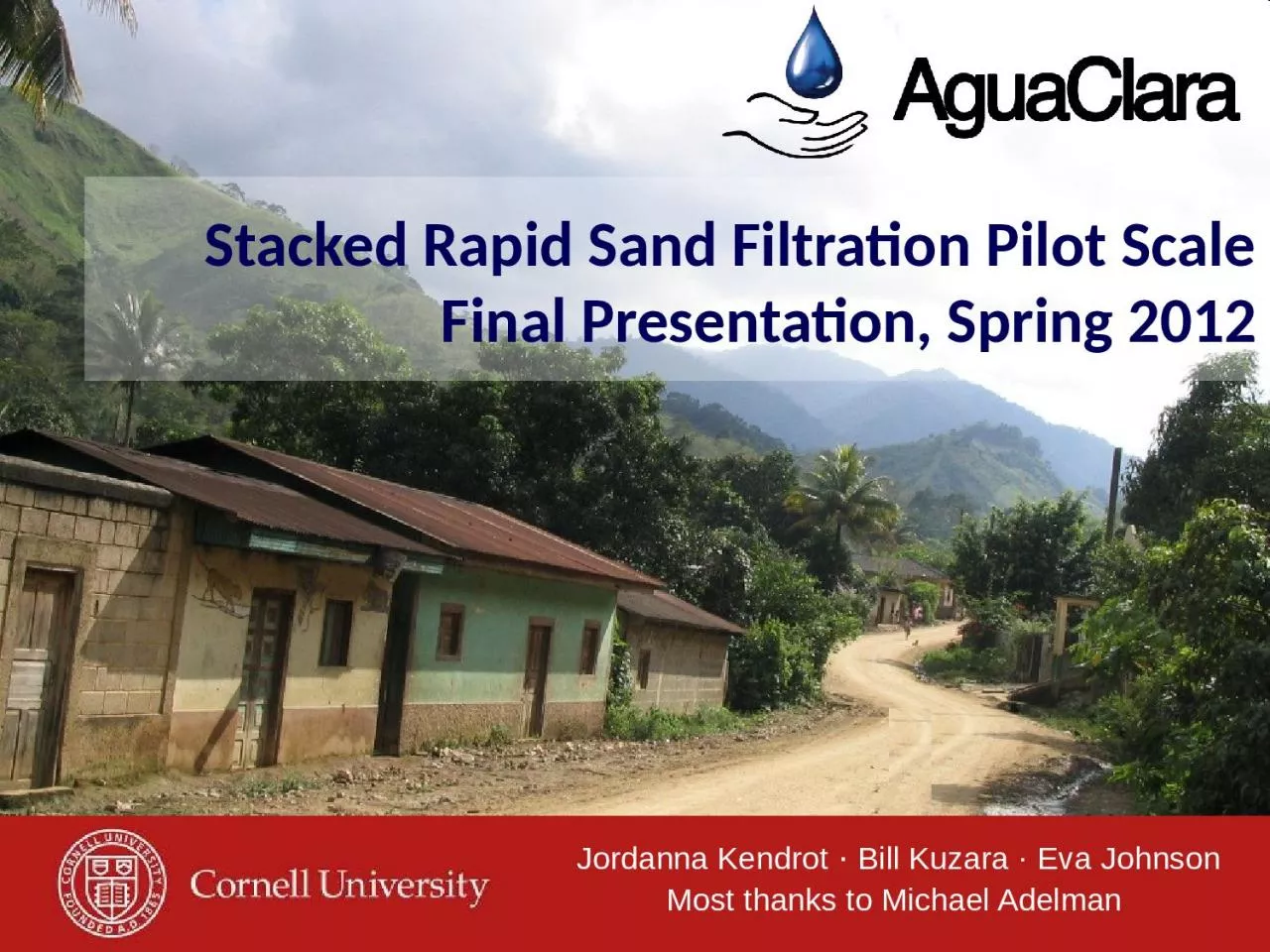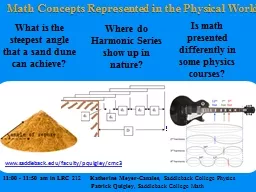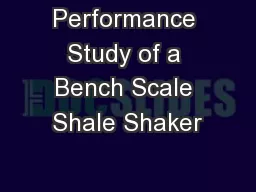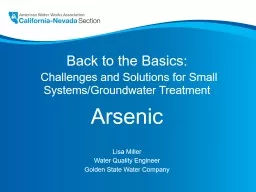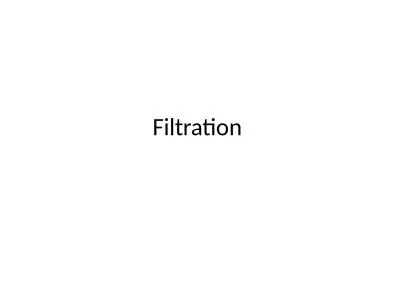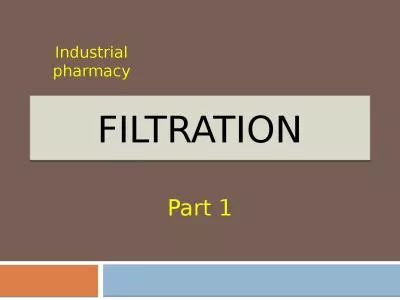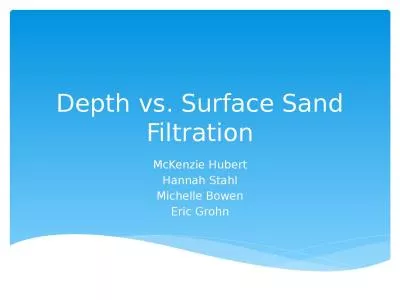PPT-Stacked Rapid Sand Filtration Pilot Scale
Author : stella | Published Date : 2024-03-13
Final Presentation Spring 2012 Jordanna Kendrot Bill Kuzara Eva Johnson Most thanks to Michael Adelman The Plan Introduction Quick review of SRSF What we learned
Presentation Embed Code
Download Presentation
Download Presentation The PPT/PDF document "Stacked Rapid Sand Filtration Pilot Scal..." is the property of its rightful owner. Permission is granted to download and print the materials on this website for personal, non-commercial use only, and to display it on your personal computer provided you do not modify the materials and that you retain all copyright notices contained in the materials. By downloading content from our website, you accept the terms of this agreement.
Stacked Rapid Sand Filtration Pilot Scale: Transcript
Download Rules Of Document
"Stacked Rapid Sand Filtration Pilot Scale"The content belongs to its owner. You may download and print it for personal use, without modification, and keep all copyright notices. By downloading, you agree to these terms.
Related Documents

